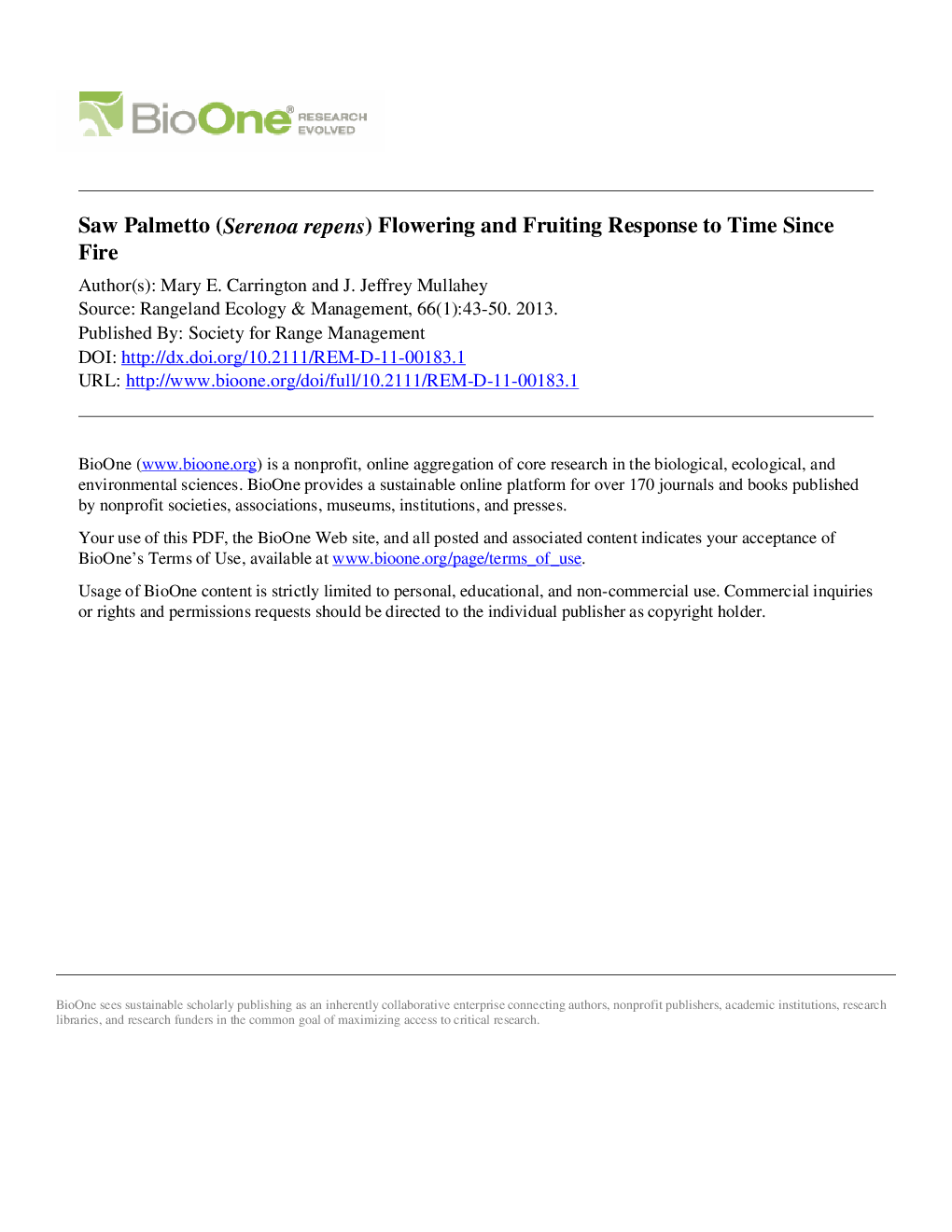| کد مقاله | کد نشریه | سال انتشار | مقاله انگلیسی | نسخه تمام متن |
|---|---|---|---|---|
| 4404176 | 1307142 | 2013 | 9 صفحه PDF | دانلود رایگان |
عنوان انگلیسی مقاله ISI
Saw Palmetto (Serenoa repens) Flowering and Fruiting Response to Time Since Fire
دانلود مقاله + سفارش ترجمه
دانلود مقاله ISI انگلیسی
رایگان برای ایرانیان
کلمات کلیدی
موضوعات مرتبط
علوم زیستی و بیوفناوری
علوم کشاورزی و بیولوژیک
علوم کشاورزی و بیولوژیک (عمومی)
پیش نمایش صفحه اول مقاله

چکیده انگلیسی
Saw palmetto (Serenoa repens [Bartr.] Small) is a shrubby palm common in southeastern US pine flatwoods ecosystems. Demand recently has increased for fruits for the herbal remedies market. Because only wild saw palmettos are harvested, management strategies are needed to promote flowering and fruiting. This study investigated effects of time since growing season (April-July) fires on flowering and fruiting of saw palmetto ramets ⥠54 cm in height, in 18 pine flatwoods or dry prairie sites (six sites in three locations, burned in 1996, 1995, 1994, 1993, 1992, or before 1991) in central and southwest Florida from 1996 to 1999. We used repeated measures, linear mixed models to test for time since fire effects on proportion of ramets flowering, proportion of ramets fruiting, and fruit yield. Ranges of means among sites over all years of the study for proportion of ramets flowering, proportion of ramets fruiting, and fruit yield were 0 to 0.78, 0 to 0.72, and 0 kg · haâ1 to 2 869 kg · haâ1, respectively. Time since fire strongly influenced flowering; highest probability of flowering occurred 1 yr after burning, followed by an abrupt decrease 2 yr after burning, then a gradual increase from 3 to 5 yr after fires (polynomial regression, P < 0.0001 for fixed effects). Probability of fruiting increased with increasing time since fire (quadratic regression, P < 0.001 for fixed effects), but fruit yields showed no pattern in response to time since fire (P=0.916). The decrease in influence of fire from flowering through fruit maturity presumably was caused by mortality from factors such as caterpillar predation and fungal infection. To promote increased flowering and fruit yields, we recommend that growing season burns be conducted approximately every 5 yr. We suggest, however, that management strategy be modified as necessary to maintain ecosystem diversity and function.
ناشر
Database: Elsevier - ScienceDirect (ساینس دایرکت)
Journal: Rangeland Ecology & Management - Volume 66, Issue 1, January 2013, Pages 43-50
Journal: Rangeland Ecology & Management - Volume 66, Issue 1, January 2013, Pages 43-50
نویسندگان
Mary E. Carrington, J. Jeffrey Mullahey,